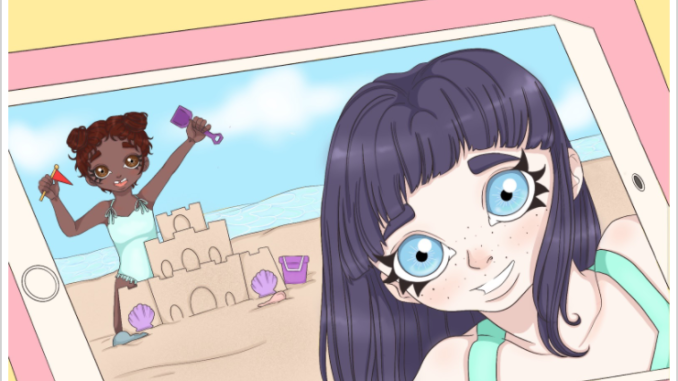
By Leigh Cassell
The Power of Technology to Connect
Technology is intertwined with almost every part of our lives, shaping the way we connect, socialize, work, play, and learn. Technology has transformed the ways we interact with each other, and the world.
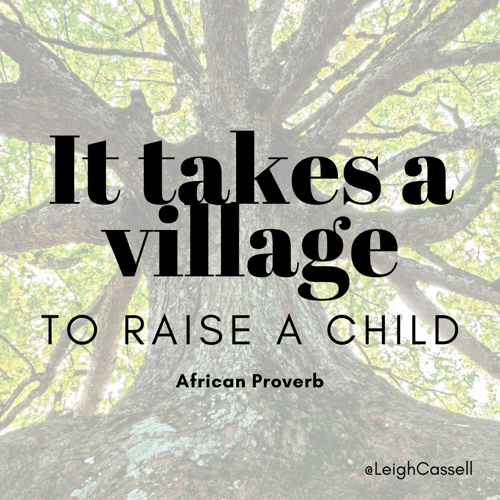
In the midst of a global pandemic education systems around the world are rethinking what it means to educate students in the age of digital networks. With access to global education systems and resources like Digital Human Library at our fingertips, progressive teachers are adopting a networked learning perspective and digital experiential approach to teaching and learning. In other words, teachers are leveraging digital technologies to broaden the K-12 student experience in ways that connect them with new people, places, and ideas from around the world.
But educating students in online spaces is not just about providing them with access to digital technologies. Ensuring that we equip students with the critical digital literacy skills and global competencies (transferable skills) they need to navigate and flourish in online spaces is essential for their growth and social development. Teaching students digital citizenship is more important now, than it has ever been.
Digital Citizenship is more than just a teaching tool, it is a way to prepare students for a society full of technology.
Dr. Mike Ribble
What is Digital Citizenship?
Digital citizenship is about how we should act, and interact with others when we are online. It’s about teaching users of technology what they need to know in ways that prepare them to be contributing citizens today, and in the future.
Digital citizenship includes, and expands on the definition of citizenship — the quality or character of an individual viewed as a member of society — keeping in mind who we are as members of a larger, more global community. More specifically, digital citizenship can be defined as the “norms of appropriate, responsible behaviour with regard to technology use” (Ribble, 2017).
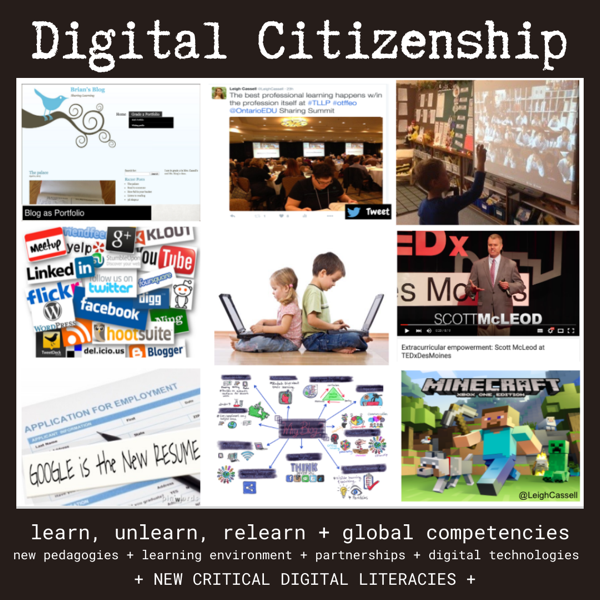
As we consider what citizenship looks like in a digital world, how we act as members of a network of people locally and globally requires an awareness of the ways technology impacts our participation in these networks. It demands that we consider norms of responsible behaviour, our new rights and responsibilities online, and our quality of habits and actions within these communities. We must also learn to balance the advantages and potential risks with our safety and security in online spaces, including how to navigate and respond to inappropriate content and cyberbullying, as well as ethical issues like copyright and plagiarism.
Although there are many variations of the definition, at the core of digital citizenship is the idea that “we are all citizens who belong to a community, and therefore, the contributions we make to this community should be positive, productive, and reasonable” (Ontario Ministry of Education, 2014).
Why Teach Digital Citizenship?

When integrated effectively, technology has the potential to transform learning by immersing students in participatory learning environments that transcend the boundaries of space and time. Digital citizenship requires participation, and schools have a responsibility to provide a safe space for students’ guided participation in online spaces. Just like we would never teach a teenager to drive without ever getting into a car, we cannot teach digital citizenship without allowing students to go online.
Although students today are often competent basic users of technology, most do not have the necessary digital citizenship skills to be safe and responsible online. Educators must make it a priority to teach students the critical digital literacy elements embedded within a digital citizenship framework, including how to navigate their digital world, evaluate and reflect critically on information, respect intellectual property, protect their privacy and the privacy of others, and build a positive reputation and digital footprint. We need to shift our thinking about digital citizenship as a lesson a week and create a school culture and mindset of understanding around the human, cultural, and societal implications related to technology use.

A “one-life” (Couros, 2015) approach to technology integration is a key factor that contributes to a positive digital citizenship culture of innovation, risk-taking, and continuous learning, while also building bridges between home and school. The successful integration of digital citizenship instruction begins with our knowledge of effective pedagogies and a commitment to creating positive, inclusive digital learning environments. The relationships we have with our students, paired with our understanding of the digital technologies students are using at home should then inform how we are integrating digital into our classroom programs. If we want to engage students as digital citizens in the classroom, we need to build a bridge between the digital citizenship experiences they are having at home “in real life”, with the curriculum-based experiences they are having at school. Doing so ensures that students are actively engaged to “develop the knowledge, skills and characteristics that will lead them to become personally successful, economically productive and actively engaged citizens” (Ontario Ministry of Education, 2013).
In today’s world, teaching digital citizenship is not optional. Digital citizenship instruction must be entrenched in daily conversations with students as they are immersed in digital learning environments, experiencing appropriate ways to act, interact, learn and create with others. The experience of being a digital citizen is fundamental in providing students with the knowledge, skills, strategies and global competencies they need to be successful today, and in the future.
Digital citizenship needs to be embraced by educators as a way of thinking – and incorporated, whenever possible, into any type of existing curriculum.
Melissa Davis
Using Children’s Books to Start Conversations about Digital Citizenship
While the experience of being a digital citizen is fundamental to learning digital citizenship, where do teachers start? The use of children’s books to introduce elements of digital citizenship is a powerful way to begin conversations with students. Children’s books as digital citizenship mentor texts introduce students to new concepts and ideas, bridge connections between technology use at home and at school, and bring positive attention to digital technology as a powerful tool for making new connections and building relationships.
Aubrey Bright in Stories that Connect Us
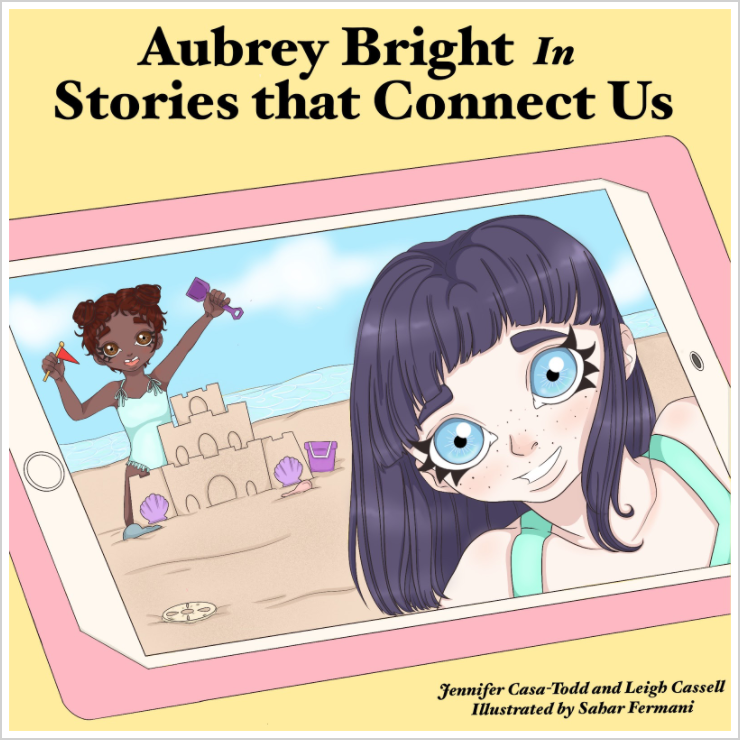
As global education systems move to blended and full remote learning, it’s timely to introduce a new children’s book written to start conversations about digital citizenship and the important role that technology plays in our lives.
Aubrey Bright in Stories that Connect Us is a heart-warming tale of inter-generational connection, and the first book in a new series focusing on how relationships are strengthened through storytelling and the power technology has to connect us.
Aubrey, a young precocious girl, has a strong relationship with her Gramma which is anchored in a love of storytelling. When her Gramma gets sick, Aubrey shows her that technology can be a powerful tool for a new kind of storytelling and connection.
How to Use this Book
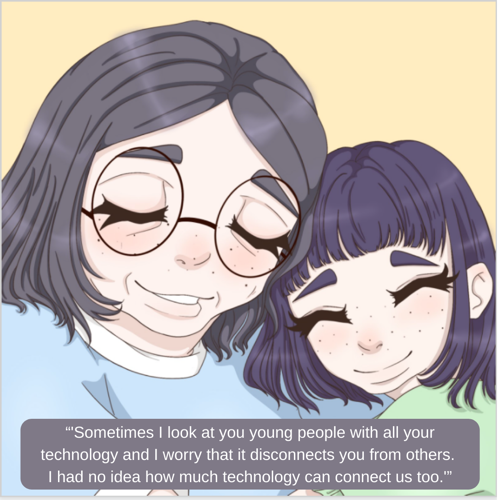
This book is intended to help readers start conversations about digital citizenship in ways that lead to their own digital citizenship experiences. With elements of digital citizenship woven throughout the story, readers are encouraged to use the Conversation Starters and revisit various moments in the book to start their own conversations about the stories that connect them, and the important role technology plays in their lives. Just as Aubrey uses digital technology to document, create, connect, and share life’s beautiful moments, readers can use technology to document and reflect on their learning, create and share their own unique digital stories, and connect with others for the purpose of learning and building new relationships.
What’s more, the book features the artwork of a talented student whose beautiful illustrations inspired the character, and whose voice helped craft the narrative. The book also includes a unique non-fiction page All About Sand Dollars written by my daughter that inspired our own digital citizenship conversations at home. This book will no doubt also inspire readers to start their own conversations about making their dreams happen.
References
Casa-Todd, Jennifer and Leigh Cassell (2020). Aubrey Bright in Stories that Connect Us. Alexandria VA: Edumatch Publishing.
Couros, A. & Hildebrandt, K. (2015). Digital Citizenship Education in Saskatchewan Schools: A Policy Planning Guide for School Divisions and Schools to Implement Digital Citizenship Education from Kindergarten to Grade 12. Government of Saskatchewan.
Ribble, M. (2017). Nine Elements. Digital Citizenship: Using Technology Appropriately (blog). Accessed at https://www.digitalcitizenship.net/nine-elements.html
Ontario Ministry of Education (2014). 21st Century Teaching and Learning: Digital Citizenship and Digital Literacy: What Research Tells Us. Edugains. Toronto: Queen’s Printer for Ontario. Accessed at http://www.edugains.ca/resources21CL/WhatsNew/WhatResearchTellsUs-DigitalCitizenship.pdf
Ontario Ministry of Education (2013). The Ontario Curriculum: Social Studies Grades 1 to 6, History and Geography Grades 7 and 8. Toronto: Queens Printer for Ontario. Accessed at http://www.edu.gov.on.ca/eng/curriculum/elementary/sshg18curr2013.pdf

Leigh Cassell is an educator, adventurer, entrepreneur and partner in learning with teachers, students, businesses and NGOs around the world. Leigh is an Education and Innovation Consultant, and Founder and CCO at Digital Human Library. Leigh is a dynamic influencer and reflective practitioner, highly skilled in building networked learning communities in ways that facilitate relationships for learning, cultivate emotional intelligence and nurture leadership in education. Leigh has received the highest level of awards from the Ontario Public School Board Association and the Ontario Teachers Federation, and she has been recognized internationally by Apple, Microsoft and Google for her innovation in education.